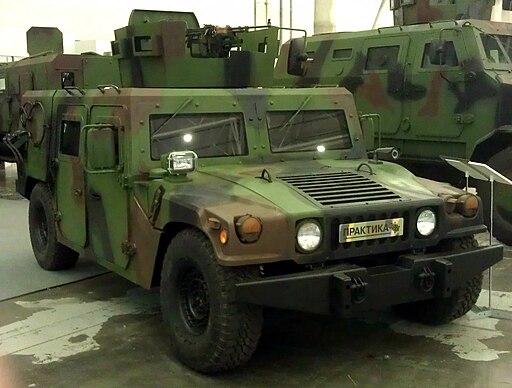In the realm of military supply chain management and vehicle functionality, the debate over up-armoring—increasing a vehicle’s defensive features—has taken on multiple aspects that go beyond its basic practical purpose. Although, on the surface, the issue appears to be squarely technical, requiring a mere algorithm of weight, material strength, and cost-benefit analyses, its tentacles sprawl into the intricate terrains of strategy, geopolitics, ethics, and even ideology. In the epicenter of this multifaceted controversy lies the High Mobility Multipurpose Wheeled Vehicle (HMMWV), colloquially known as the Humvee. This ostensibly simple piece of machinery is a prism refracting broader debates that have yet to be resolved.
The Imperatives of Protection
Initially designed for versatility and rapid deployment, the Humvee has faced escalating threats in conflict zones. The scourge of Improvised Explosive Devices (IEDs), snipers, and ambushes has necessitated reconsidering its role, especially its capability to safeguard its occupants. Advocates for up-armoring assert that no cost is too exorbitant when lives are at stake. They argue that enhanced protection would reduce casualties and buoy the morale of deployed troops, thereby creating a positive feedback loop and enhancing operational efficacy.
The Detractors: Tactical Limitations and Unintended Consequences
In contrast, opponents of extensive up-armoring offer a robust critique rooted in real-world implications. They assert that the additional weight and reduced maneuverability compromise the Humvee’s intrinsic utility. To retrofit it with armor, according to this viewpoint, is to modify it into a quasi-tank—less agile, fuel-inefficient, and burdened with an altered center of gravity that undermines its off-road capabilities.
Furthermore, up-armored vehicles are prone to axle and suspension issues, requiring increased maintenance and potentially diminishing their functional longevity. These physical alterations are not merely incremental but transformative ones that could ripple through military strategies and mission parameters.
The Political and Economic Quagmire
Lurking within this debate are politicians and budgetary gatekeepers. Up-armoring involves significant expenditures in terms of immediate costs for materials like reinforced steel and composite armor and the long-term operational costs associated with heavier vehicles. Political decision-makers must navigate a labyrinth of priorities judiciously, weighing immediate tactical advantages against long-term financial sustainability. This predicament is exacerbated when you consider that the same funds might alternatively be channeled into areas like cybersecurity, drones, or even the veterans’ welfare programs—each with its own group of advocates and dissenters.
Ethical Dimensions
The crux of the up-armoring dilemma also pivots on ethical axes. Should financial constraints ever impede the best possible protection for those in the line of fire? And yet, can protection be disentangled from a broader set of strategic considerations without imperiling the very missions the military seeks to execute? These questions take time to answer and need a deep understanding of different ethical approaches, from focusing on the greatest good for the majority to following a set of moral rules.
Suggested Pathways to Resolution
Despite the enmeshed complexities, a graduated approach incorporating modular armoring systems could offer an interim solution. This would permit vehicles to be adapted according to specific mission requirements, thus preserving some level of tactical flexibility. Concurrently, intensified research into lightweight yet resilient materials could alleviate the trade-offs inherent in up-armoring long-term.
The labyrinthine discourse surrounding up-armoring Humvees remains an entangled web of tactical, economic, political, and ethical threads. Each proposed alteration in the
Humvee’s armor opens a Pandora’s box of unforeseen repercussions, implications, and potential disadvantages. Yet, the quest for an optimum middle ground remains an inescapable imperative, demanding a dynamic equilibrium between competing needs and constraints. There are no easy answers, but in the details of this debate, we find an unfiltered reflection of our collective values, fears, and aspirations.
For more insights into the Humvee M998 and other important military aircraft, visit Aces In Action. Here, you’ll find an amazing piece of artwork by Craig Tinder titled “M998 HMMWV” that illustrates the revered ‘Humvee’. The limited edition canvas print even includes a piece of supplemental door armor from a U.S. Military HMMWV, making it a unique piece of history!
M998 HMMWV – Humvee Military Art by Artist Craig Tinder
Known as the Humvee, the High-Mobility Multipurpose Wheeled Vehicle (HMMWV) M998 replaced the M151 series Jeeps in 1989. The M998 is capable of transporting a payload of 2,500 lbs, has a 60% slope climb, and can ford 60 inches of water – all with a ground clearance of 16 inches. The HMMWV is the world standard in off-road military trucks and can be configured for a variety of missions including troop transport, cargo/utility carrier, ambulance, TOW missile & machine gun platform, scout-recon, and much more.






Share:
Introduction to the Ilyushin IL-2: The “Flying Tank” of WWII
Olympic’s War Service: From Luxury Liner to Troop Ship—The Titanic Sister’s Unsung Valor